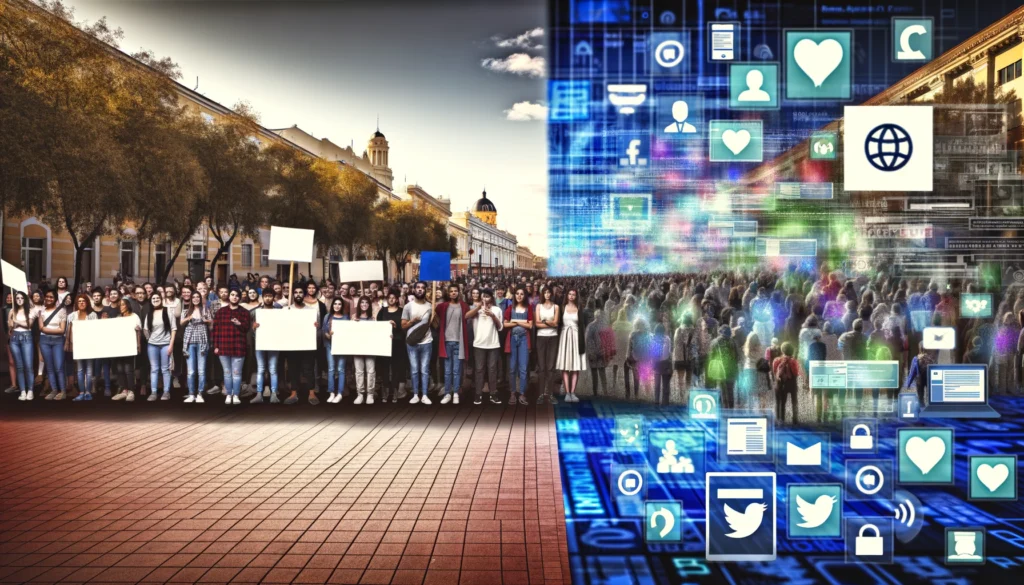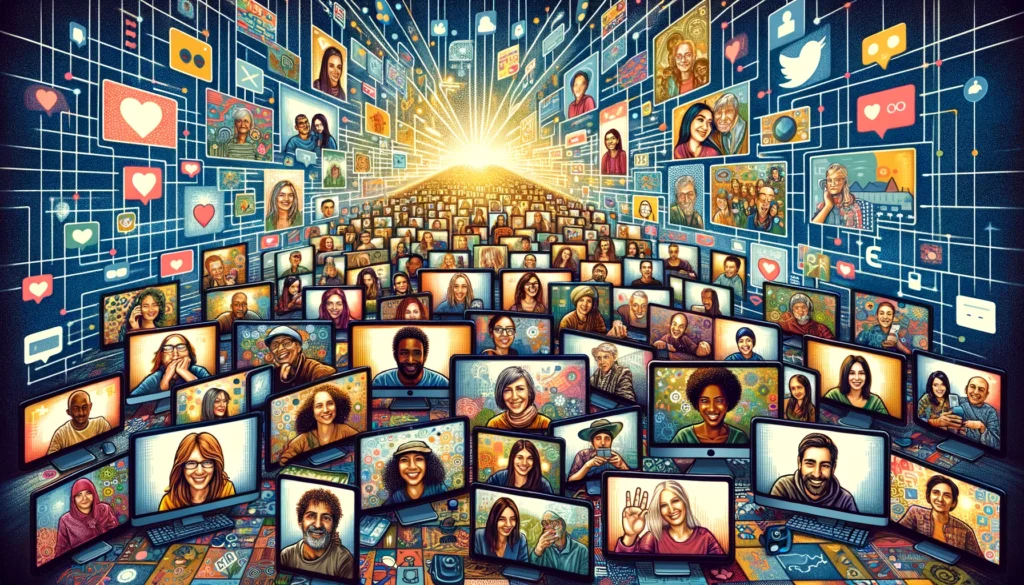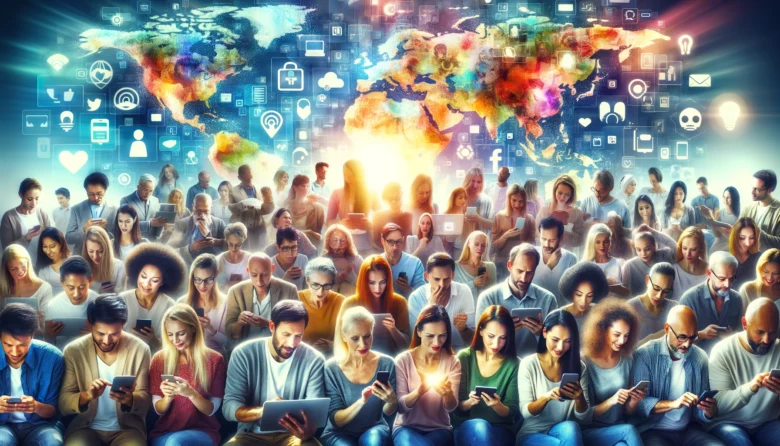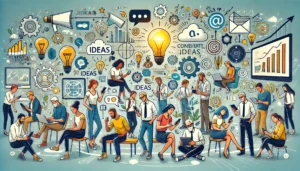In the digital age, social media serves as a powerful tool for forming tribes—groups united by shared interests, ideologies, or identities. This phenomenon has a profound impact on society, fostering unity and division alike. As we delve into the sociological effects of these digital communities, we uncover a complex narrative of connectivity, polarization, and the evolving relationship between humans and technology.
I. Definition and Emergence of Social Media Tribes
Defining Social Media Tribes
Social media tribes are communities formed on platforms like Twitter (a microblogging service), Facebook (a social networking site), and Instagram (a photo and video sharing app), centered around common interests or beliefs. The Pew Research Center’s (a nonpartisan American think tank) studies reveal that nearly 72% of Americans engage with social media, finding solace and identity within these digital groups.
Algorithmic Influence
Algorithms, the backbone of social media platforms, curate content that aligns with users’ preferences, often creating echo chambers. Research from the MIT Media Lab indicates that misinformation spreads faster on Twitter than factual news, amplified within ideologically similar groups.
Identity and Belonging
For individuals with niche interests or those who identify as part of marginalized communities, social media offers a space for expression and community-building. A Varkey Foundation (an education management company) survey highlights that 47% of youths find social media to be the space where they can most freely express themselves.

II. The Societal Impact of Social Media Tribes
Political Polarization
Social media tribes have significantly contributed to political polarization, turning platforms into arenas for ideological battles. A Pew Research Center study found that 55% of users feel exhausted by the political discourse encountered online.
Mobilization for Social Causes
Conversely, social media has facilitated mobilization for causes like #MeToo, demonstrating the positive power of these platforms to effect change.
Cultural and Societal Implications
The rise of niche cultures, like eSports (competitive gaming), showcases social media’s role in bringing subcultures to the forefront. According to Newzoo’s (the global leader in video games and gamer data) Global eSports Market Report, eSports attracted a global audience of 495 million in 2020.
III. Case Studies: The Good and The Bad
Make-A-Wish Foundation and Disney’s #ShareYourEars Campaign
This initiative exemplifies the constructive use of social media in promoting charitable causes. Disney (an entertainment and media conglomerate) encouraged users to post photos wearing Mickey Mouse ears with a specific hashtag, donating to the Make-A-Wish Foundation (a nonprofit organization that fulfills the wishes of children with critical illnesses) for every post. The campaign generated over 1.7 million photos, significantly boosting the foundation’s social media reach and engagement, with a 330% increase in reach and a 554% increase in engagement.
Misinformation and Vaccine Hesitancy
The CDC (Centers for Disease Control and Prevention) reports that misinformation about COVID-19 vaccines on social media has led to increased vaccine hesitancy, showcasing the destructive potential of these digital tribes.
IV. Theoretical Perspectives on Social Media Tribes
Anthropologist Paul James views tribes as groups with strong bonds, often rooted in a shared place or ideology. Social media, however, challenges traditional notions of connectivity, as argued by Sherry Turkle in her TED Talk “Connected, but Alone?”. Conversely, Robin Dunbar (a British biological anthropologist) suggests that the internet enhances our communicative capabilities, indicating that social media could indeed foster genuine tribal connections.

V. The Impact on Brands and Marketing
Brands like GoPro (a technology company specializing in action cameras) engage with their consumer tribes by sharing user-generated content, turning customers into an integral part of their brand identity. Conversely, the backlash against Xbox One (a home video game console by Microsoft) highlights how brand tribes can quickly turn critical if expectations are not met.
VI. Future Directions
The development of decentralized social media platforms promises a shift away from algorithmic curation, potentially fostering more genuine discourse. Meanwhile, governments and regulatory bodies are exploring measures to combat the negative impacts of social media, such as misinformation and online hate speech.
Conclusion
Social media tribes represent the intricate interplay between digital connectivity and human behavior, embodying both the unifying and divisive potential of online communities. Understanding and navigating this landscape requires a nuanced approach, balancing the benefits of digital connectivity with the challenges it presents.
Author’s Note
As we navigate through the evolving landscape of social media, it’s clear that these platforms have become more than just spaces for casual interaction. They are the birthplaces of vibrant tribes, and communities formed around shared interests, ideologies, and the human need for connection. This blog seeks to illuminate the intricate dynamics of social media tribes, exploring their power to unify and divide, to inspire action, and challenge traditional norms.
G.C., Ecosociosphere contributor.
References and Further Reading
- Pew Research Center: Studies on internet and technology use
- MIT Media Lab: Research on information spread on Twitter
- Varkey Foundation: Survey on youth and social media expression
- Newzoo: Global eSports Market Report
- CDC: Reports on vaccine misinformation
- TED Talks: Insights from Sherry Turkle and others on social media’s impact





Comments
Can you be more specific about the content of your article? After reading it, I still have some doubts. Hope you can help me.
Thanks for sharing. I read many of your blog posts, cool, your blog is very good.
Can you be more specific about the content of your article? After reading it, I still have some doubts. Hope you can help me.